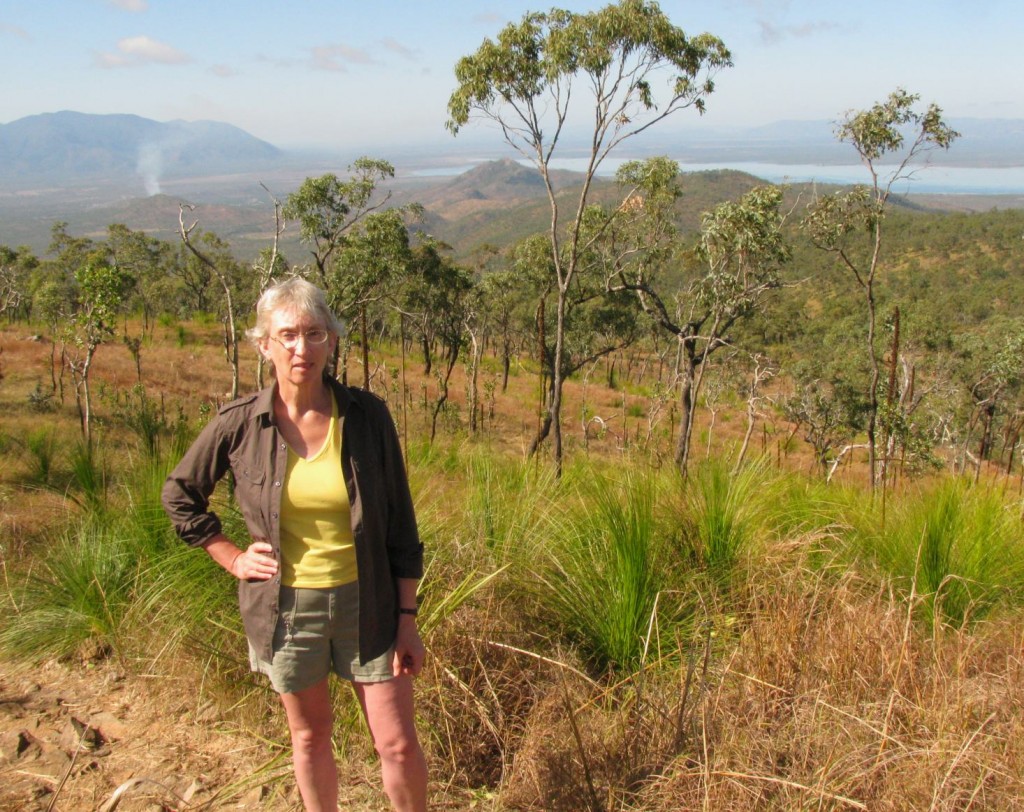
Here I am on Mt. Stuart, Queensland, with grass trees in dry tropical savannah. (© Vilis Nams)
With snow blanketing our Nova Scotia yard and nearby meadows and woods, I decided to devote today’s post to an icon of Australian vegetation, the grass tree. During our year in Oz, Vilis and I first encountered grass trees in the understory of dry tropical savannah surrounding Townsville. Mount Stuart, in particular, possessed a fine collection of grass trees that intrigued us with their rough, stumpy trunks and wildly lush heads of leaves.
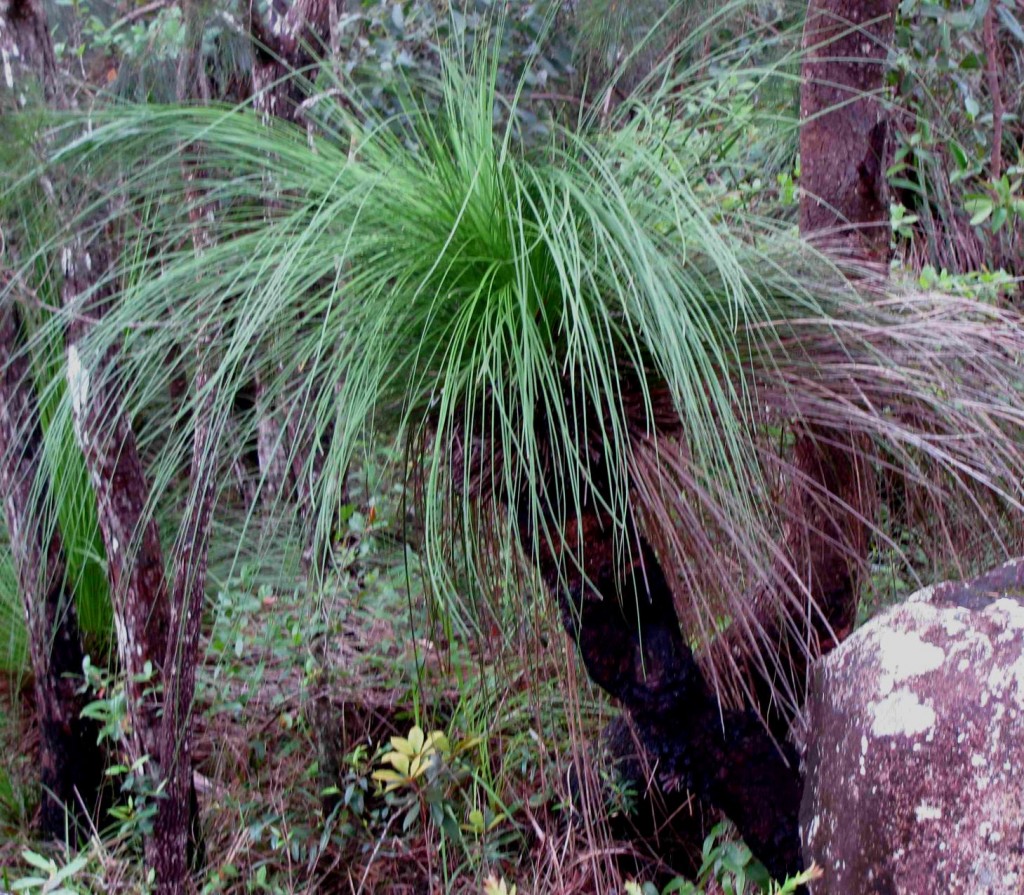
Grass Tree, Witt’s Lookout, Paluma Range National Park, Queensland (© Vilis Nams)
Excursions to Paluma acquainted us with more grass trees growing in open woods on lower slopes and among banksias and stunted trees in dry, rocky habitat bordering rainforest within Paluma Range National Park. On Hinchinbrook Island, an upland saddle that formed the highest elevation on the Thorsborne Trail was thickly vegetated with grass trees, and more grass trees peppered open woodland growing on sandy soil. Grass trees also formed dense moors on upland plateaus such as Archer’s Knob in Tasmania’s Narawntapu National Park and grew within the understory of open, dry gum forests in Freycinet National Park.
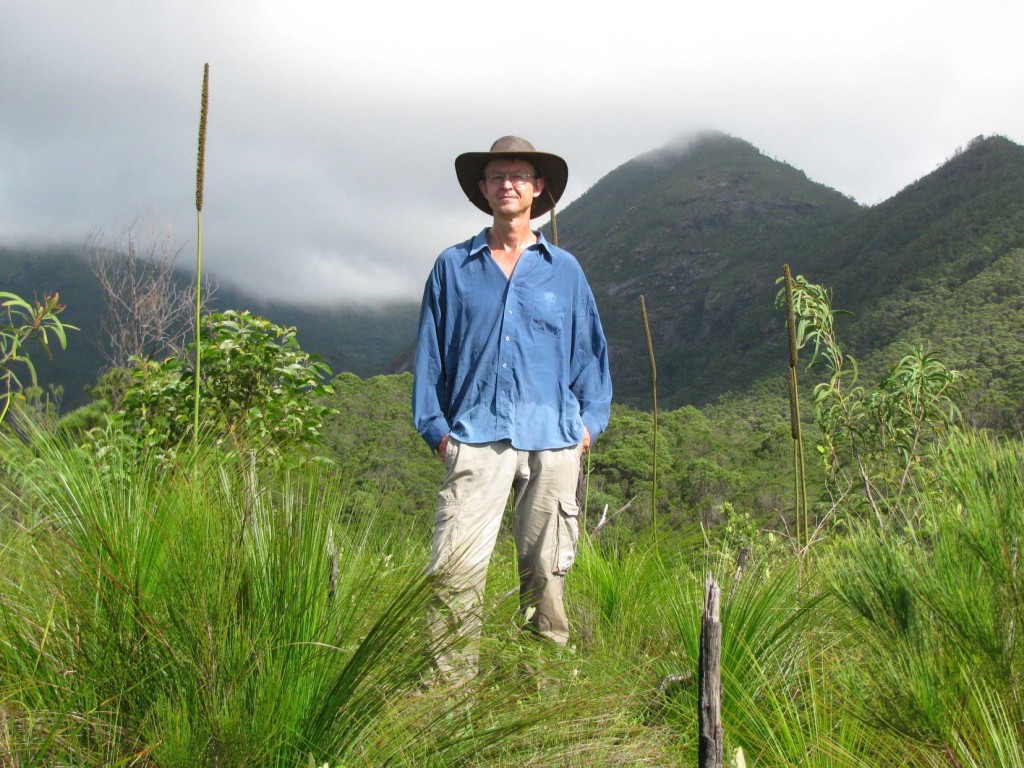
Vilis and Grass Trees, Hinchinbrook Island National Park, Queensland (© Magi Nams)

Grass Tree Moor, Archer’s Knob, Narawntapu National Park, Tasmania (© Vilis Nams)
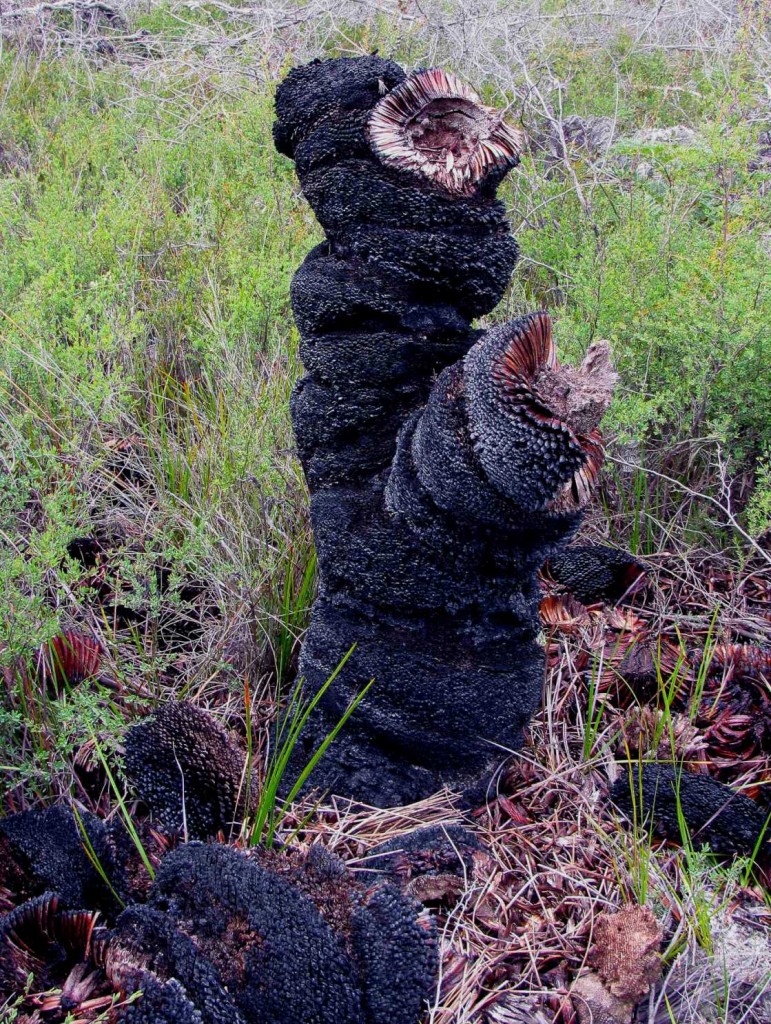
Grass Tree Killed by Phytophthora Root Rot, Freycinet National Park, Tasmania (© Vilis Nams)
Found only in Australia, all 28 species of grass trees are perennial, slow-growing plants belonging to the ancient genus Xanthorrhoea.1 Some species produce aboveground trunks, while others do not. A grass tree’s trunk is a cylinder formed from tightly packed leaf bases, as can be seen in the photo (right) of a plant killed by phytophthora root rot in eastern Tasmania. The leaves of grass trees with trunks obtain water and nutrients via aerial roots that pass down through the open core1 of the trunk to the ground.
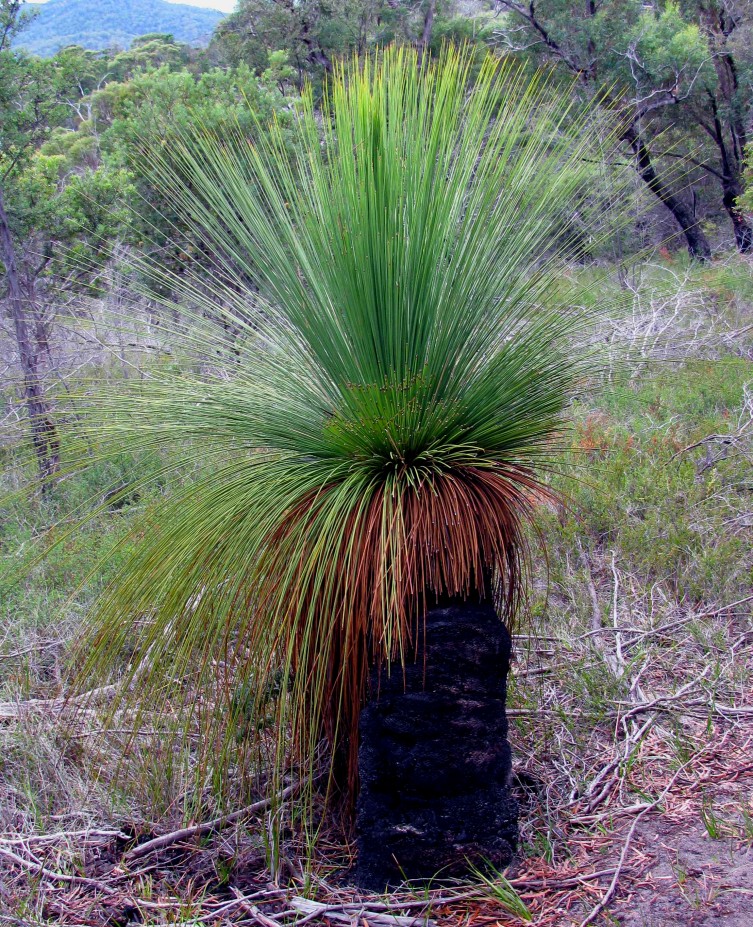
Healthy Grass Tree, Freycinet National Park, Tasmania (© Vilis Nams)
Bushfires blacken the trunks of grass trees, but don’t kill the plants. Like many species of eucalyptus trees, grass trees possess highly resinous leaves and exist in an intimate relationship with fire, depending on it for their survival. Flowering is stimulated by fire, the grass trees producing one- to three-metre flower stalks called scapes topped by cattail-like spikes. Most of the spikes Vilis and I observed were brown and dried, but in May, we saw spikes covered with tiny white blossoms at Wallaman Falls in Girringun National Park, Queensland.
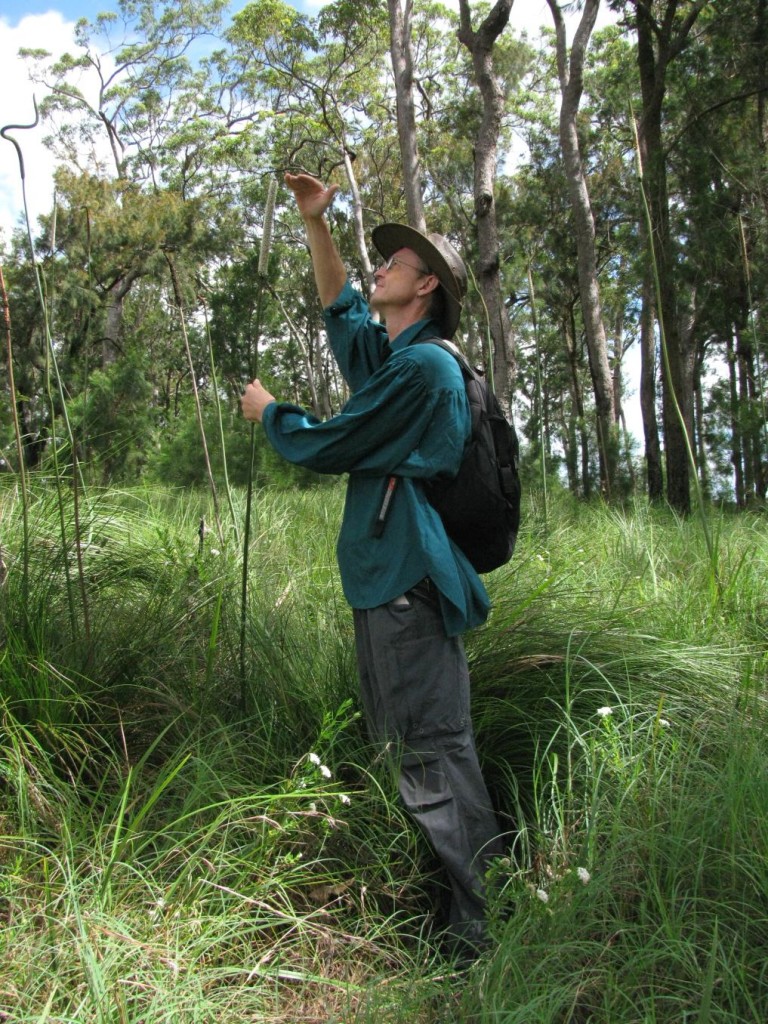
Vilis and Grass Tree in Flower, Wallaman Falls, Girringun National Park, Queensland (© Magi Nams)
Populations of grass trees are declining due to land clearing and root rot.2 The iconic plants are popular landscape specimens for Australian gardeners2 and, in at least one case, a grass tree provided a natural canvas for a quirky portrait alongside a bushwalking track in Tasmania.

Grass Tree Art, Freycinet National Park, Tasmania (© Vilis Nams)
References:
1. Wikipedia. Xanthorrhoea. Updated 7-Nov-2011. Accessed 6-Feb-2012. http://en.wikipedia.org/wiki/Xanthorrhoea
2. Phil Watson. The Grass Tree: Its Uses and Abuses. Australian Plants online, March 2004. Association of Societies for Growing Australian Plants. Accessed 6-Feb-2012. http://anpsa.org.au/APOL33/mar04-5.html


